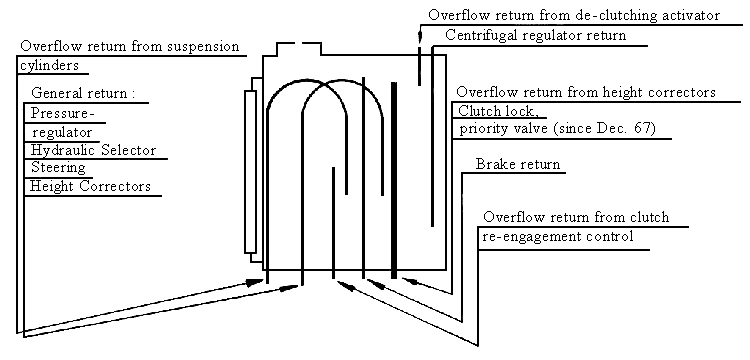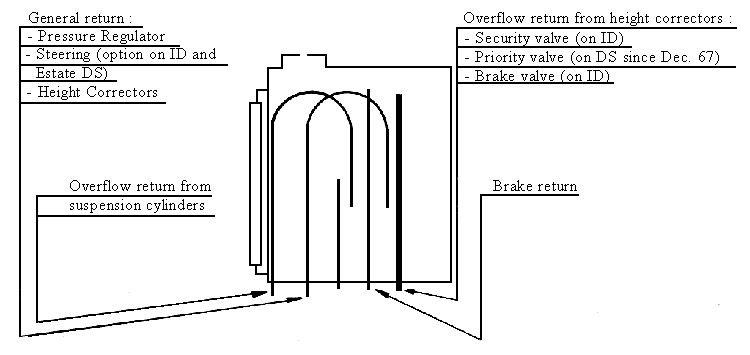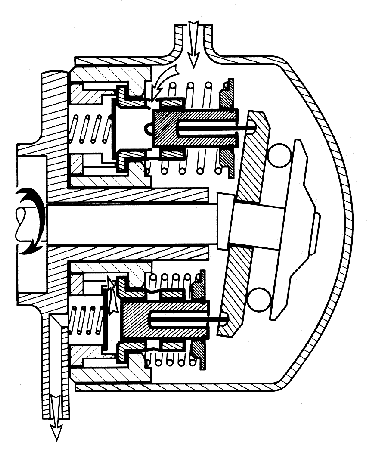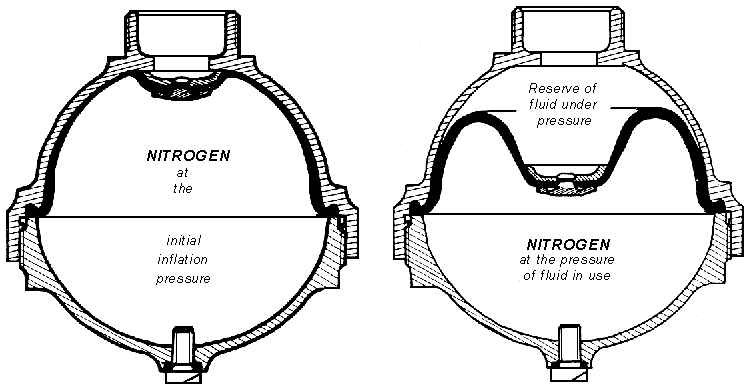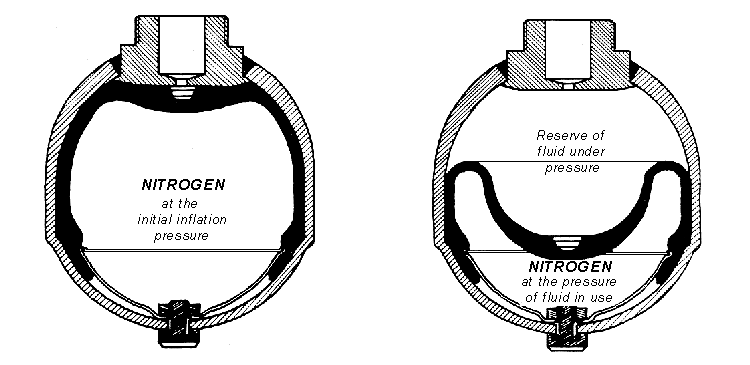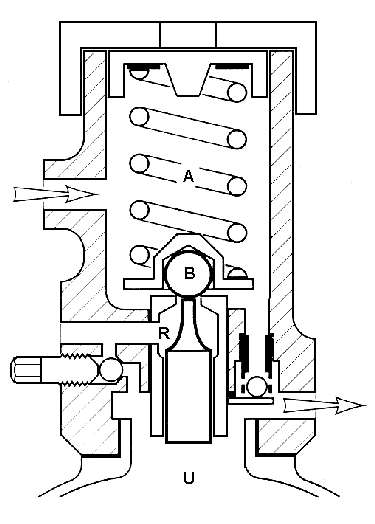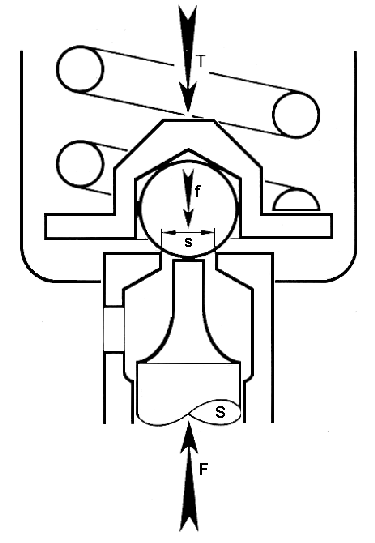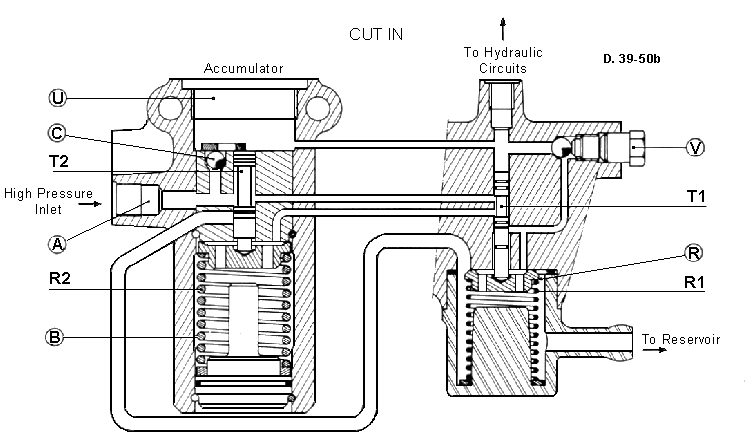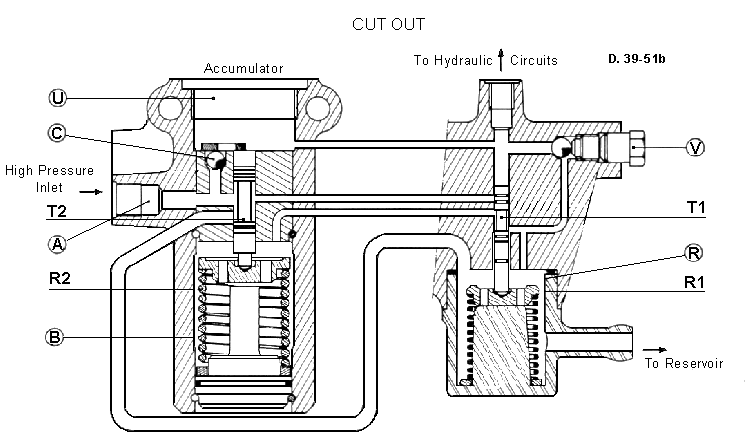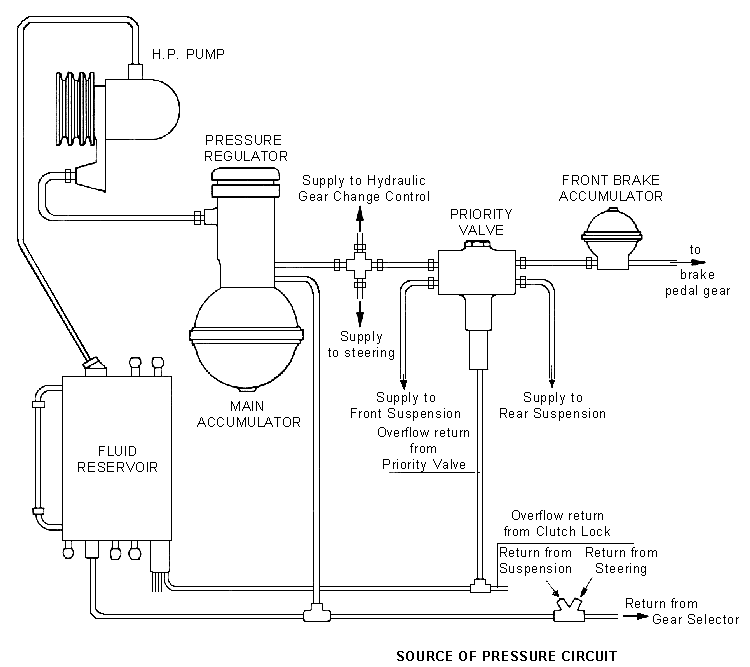Source of pressure
| Circuit Layout | Reservoir | High Pressure Pumps | 7-Cyl. High Pressure Pump | Main Accumulator | Pressure Regulator |
I CIRCUIT LAYOUT
- The units comprising the source of pressure are as follows :
- The hydraulic reservoir.
- The high pressure pump.
- The high pressure regulator.
- The main pressure accumulator.
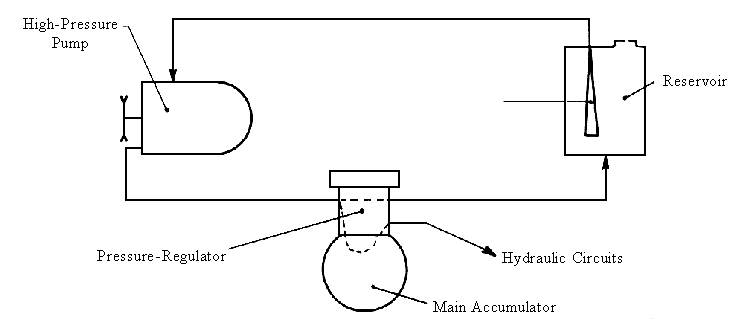
- To ensure the correct operation of all the hydraulic units a certain minimum pressure
must be maintained in their supply circuits.
To avoid making the pump stop and start for each demand of hydraulic pressure, a certain amount of fluid is stored at a higher pressure than the minimum operating pressure. - As long as the pressure remains between the storage pressure and the minimum operating pressure then the pump draws fluid from the reservoir and returns it wichout generating any pressure, this is the rest-period for the pump.
- The reserve of pressure is maintened by the main accumulator.
- The maximum and minimum pressures are controlled by the pressure-regulator which causes
the flow of fluid to be directed to :
- either the main accumulator (pumping under pressure)
- or the reservoir, (pumping without pressure).
